Inventing the Future Through Mentoring: A Conversation with Saba Akhyani
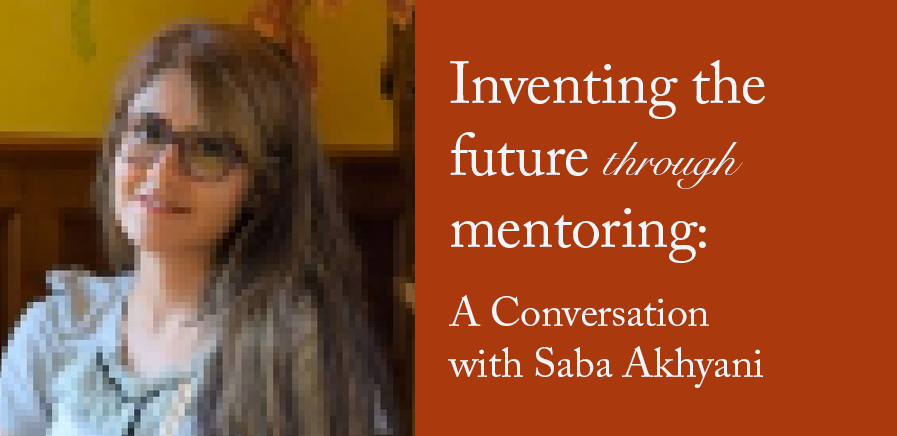
This blog post was contributed by Sophia Han, a former Digital Fellow in the Digital Humanities Innovation Lab.

This blog post was contributed by Sophia Han, a former Digital Fellow in the Digital Humanities Innovation Lab.



This blog post was contributed by Sophia Han, a former Digital Fellow in the Digital Humanities Innovation Lab.
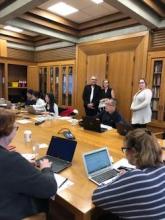
On February 25, 2019, the DHIL was excited to host a keynote and workshop by Mahendra Mahey, British Library Labs (BL Labs) Manager. The British Library is one of the largest reference libraries in the world, created in 1753 as a part of the British Museum and made a separate institution in 1973. BL Labs is a part of the British Library’s Digital Scholarship team, and it works to connect researchers, artists, and educators with the BL’s digital collections in innovative ways.
We are very excited to announce the launch of The Prud’homme Library, a physical and digital exhibition of artworks and artefacts recently discovered in the attic of a Saskatchewan farmhouse. The exhibition is a remarkable collection of fakes and forgeries, ranging from rare vases to space exploration logs, false obituaries to oil paintings. It is believed that an anonymous donor left a small wooden crate on the porch of the Bishop of Prince Albert Diocese, Msgr. Joseph Henri Prud’homme’s Palace in the late 1920s.
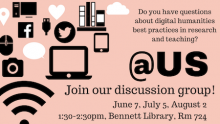
As a part of our support for researchers’ digital humanities projects, the DHIL regularly offers tool- and skill-based workshops, like qualitative analysis with NVivo or spatial data visualization with Story Maps. In an effort to include more “yack” along with the “hack” – for more critical discussion to complement our digital humanities workshops – we wanted to offer a space for our community to focus on some of the cultural and political questions that have arisen as humanities departments have embraced the digital.
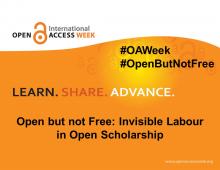
The belief behind Open Scholarship is one that many Digital Humanists are happy to get behind: knowledge should be openly and freely available. In an ideal open access world, researchers and educators would share their knowledge and resources with anyone who had access to the internet. In the often less-than-ideal world, however, for-profit journals and online harassment can prevent the free production and distribution of knowledge.
The Digital Humanities Skills Workshop Series continued on Tuesday, October 30 with the workshop, “Using NVivo for Humanities Research.” Facilitated by Graduate Peer NVivo Facilitator, Esteban Morales, and DHIL Fellow Kandice Sharren, this workshop explored the possibilities NVivo represents for humanities research and introduced participants to the basics of using it.
“If I had to draw a map of those four-plus years to illustrate the time between the day of my mother’s death and the day I began my hike on the Pacific Crest Trail...the map would be a confusion of lines in all directions, like a crackling Fourth of July sparkler with Minnesota at its inevitable center,” Cheryl Strayed writes in her autobiography, Wild. “But,” she continues, “those lines wouldn’t tell the story” (28).
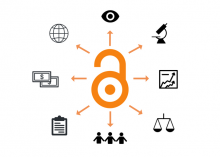
For a week in June, I joined seven other members of the Digital Humanities community from around the world for a week-long session called “Open Access and Open Scholarship” to learn more about how to responsibly make scholarly communication open and accessible to the public. I was at DHSI, the Digital Humanities Summer Institute at the University of Victoria, which has become one of the most well-attended DH training programs in North America.
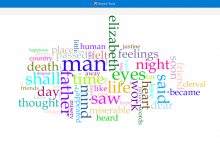
If you are interested in finding out what the most frequently occuring words are in the text(s) you are researching, you could always start by creating a Word Cloud, one of the best known text analysis visualizations. The results are simple and aesthetically-pleasing: run your text through a word cloud application to produce a roughly circular design of the most frequently used words, with the highest frequency appearing as the largest and lower frequencies diminishing in size.